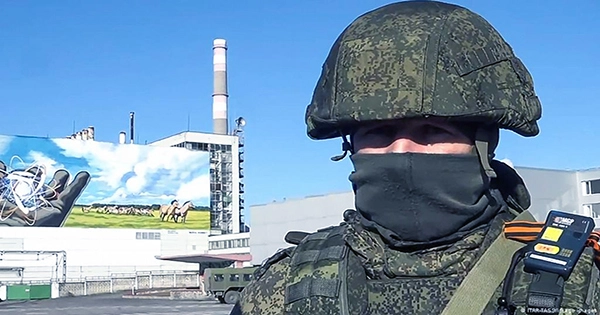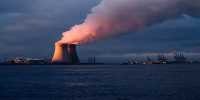For more than three decades, a 1,000-square-mile (2,600-square-kilometer) exclusion zone has ringed the Chernobyl Nuclear Power Plant in northern Ukraine, keeping people out. On April 26, 1986, Chernobyl’s reactor number four melted down due to human error, unleashing massive amounts of radioactive particles and gases into the surrounding terrain – 400 times the amount of radiation released by the Hiroshima atomic bomb.
The exclusion zone was established to confine radioactive materials while also protecting the area from human disturbance. Apart from a few industrial districts, the majority of the exclusion zone is devoid of human activity and looks to be normal. Plants and animals have returned in substantial numbers in certain regions where radiation levels have decreased over time.
I’ve spent more than two decades working in Ukraine, Belarus, and Fukushima, Japan, mostly on the impacts of radiation. Over the last few days, I’ve been asked several times why Russian soldiers invaded northern Ukraine through this nuclear wasteland, and what the environmental ramifications of military operations in the area would be.
Some experts believe the zone has become a wildlife haven, but others are unconvinced. At least in areas of high radioactivity, when bird, animal, and insect population densities and variety are substantially lower than in the “clean” sections of the exclusion zone, appearances can be misleading.
The strategic advantages of basing military operations in the Chernobyl exclusion zone become evident in retrospect. It is a vast, unpopulated territory connected to the Ukrainian capital by a paved roadway that passes by few impediments or human settlements. Because the Chernobyl zone borders Belarus, it is safe from Ukrainian soldiers in the north. The industrial sector of the reactor site functions as a big parking lot, appropriate for staging an invading army’s thousands of cars. The power facility also contains the whole region’s major electrical grid switching network.
Even though the power station itself has not generated any electricity since 2000, when the last of Chernobyl’s four reactors was shut down, it is feasible to switch off the lights in Kyiv from here. Although Kyiv’s electrical demands could certainly be met by other nodes on the Ukrainian national power system, such control over the power supply is likely strategic. Given the improbability that Ukrainian or other troops would risk battle on a facility storing more than 5.3 million pounds (2.4 million kg) of radioactive spent nuclear fuel, the reactor site is likely to provide significant protection from aircraft attack. During normal operations, a nuclear reactor produces extremely radioactive material.
A direct assault on the power plants spent fuel pools or dry cask storage facilities might unleash even more radioactive material into the environment than the 1986 meltdown and explosions, resulting in a global environmental catastrophe. The Chernobyl exclusion zone is one of the world’s most radioactively polluted areas. Thousands of acres surrounding the reactor site have ambient radiation dose rates that are thousands of times higher than average background levels. It is possible to obtain a harmful radiation dosage in just a few days of exposure in portions of the so-called Red Forest near the power station.
The first visible environmental consequence of the invasion was reported by radiation monitoring stations located across the Chernobyl zone. Starting after 9 p.m. on Feb. 24, 2022, sensors installed by the Ukrainian Chernobyl EcoCenter in case of accidents or forest fires revealed huge increases in radiation levels along key roadways and near nuclear sites. That’s when Russian invaders from Belarus arrived in the region. There was worry that the containment structures had been destroyed because the spike in radiation levels was particularly noticeable in the immediate proximity of the reactor buildings, however Russian authorities have refuted this possibility. The sensor network unexpectedly ceased reporting on Feb. 25 and did not resume until March 1, 2022, thus the entire extent of the army movements’ disruption to the region is unknown.
If the spike in radiation readings was caused by dust stirred up by vehicles rather than damage to containment facilities, and assuming the increase lasted only a few hours, it’s unlikely to be of long-term concern, since the dust will settle after soldiers pass through. However, part of the billowing dust was absorbed by Russian forces and the Ukrainian power plant personnel who were taken prisoner. The dirt in the Chernobyl exclusion zone has been found to contain radionuclides like as cesium-137, strontium-90, various plutonium and uranium isotopes, and americium-241. They’re all poisonous, carcinogenic, or both if breathed, even at extremely low doses.















